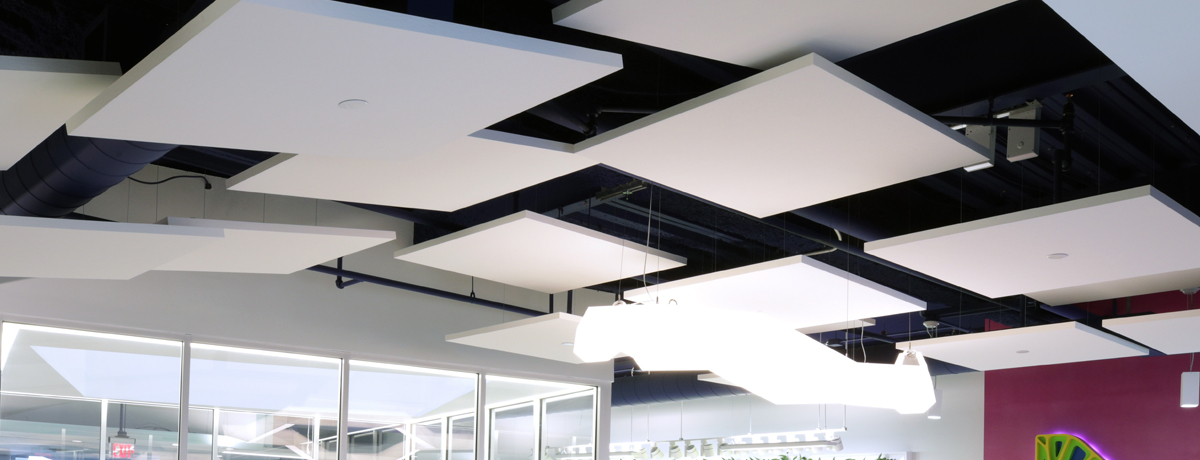Can Sound Absorbing Acoustic Ceiling Panels Really Improve Your Room's Acoustics?
Noise issues are increasingly common, both at home and in professional settings. Whether it’s noisy neighbors, loud street sounds, echoing conference rooms, or distracting household noise, these distractions diminish comfort and productivity significantly. Fortunately, sound absorbing acoustic ceiling panels have emerged as a popular and effective solution. But can these panels genuinely transform your room's acoustics, or is their effectiveness overstated? Let's dive deeper to find the answer.

How Do Sound Absorbing Acoustic Ceiling Panels Work?
Understanding Acoustic Panels
Before discussing effectiveness, it’s essential to understand what acoustic panels are and how they work. Acoustic panels are specially designed materials engineered to absorb sound waves rather than reflect them. It’s crucial to distinguish sound absorption from soundproofing. While soundproofing prevents sound from escaping or entering a room, sound absorption deals specifically with reducing echo and reverberation inside a space.
How Panels Reduce Noise
Sound absorbing acoustic ceiling panels capture and dissipate sound energy, significantly reducing the reflective noise that causes echoing and poor acoustic quality. When sound waves hit these panels, instead of bouncing off, they penetrate and get trapped in the panel’s porous material. This dramatically reduces reverberation, improving speech clarity and overall acoustic comfort.
For example, consider a meeting room with hard surfaces—sound waves bounce off walls and ceilings, creating a distracting echo. Installing acoustic panels can transform such a noisy space into a clear, calm environment suitable for focused conversations and productivity.
Key Benefits of Installing Sound Absorbing Acoustic Ceiling Panels
Improved Sound Quality
Installing these panels dramatically enhances sound clarity. Whether you're watching movies, enjoying music, or communicating in meetings, the reduction in echo and reverberation significantly boosts sound quality.
Enhanced Privacy
Ceiling acoustic panels effectively reduce sound transmission between adjacent rooms, enhancing privacy in shared spaces or homes with thin walls. This makes acoustic panels particularly beneficial in apartment complexes or offices.
Better Productivity and Comfort
Research suggests noise reduction can improve productivity by up to 66%. In noisy office environments, acoustic ceiling panels reduce distractions, creating a quieter, more comfortable atmosphere conducive to focused work.
Aesthetic Versatility
Today's acoustic panels are available in diverse styles, colors, and textures. They not only serve acoustic purposes but also enhance interior aesthetics, seamlessly blending with or enhancing your interior design theme.
Real-life Examples & Case Studies
Residential Spaces
Imagine setting up your dream home theater. Without acoustic treatment, sound reflections can distort audio, ruining the immersive experience. Installing acoustic ceiling panels solves this problem, ensuring crisp and clear sound reproduction.
Commercial Spaces
Consider open-plan offices or conference rooms notorious for poor acoustics. Acoustic ceiling panels greatly improve these environments by reducing echo, enhancing communication clarity, and promoting better overall working conditions.
Studies indicate that properly installed acoustic panels can reduce reverberation and echo by up to 85%, transforming noisy spaces into acoustically comfortable zones.
Factors That Affect Acoustic Panel Performance
Panel Material and Thickness
Different panel materials offer varying levels of effectiveness. Materials like fiberglass, mineral wool, and acoustic foam each have distinct acoustic properties. Generally, thicker and denser panels offer superior sound absorption capabilities.
Room Size and Layout
Effective acoustic management also relies heavily on strategic panel placement. Panel distribution should correspond to the room’s dimensions and layout. Typically, panels installed symmetrically and evenly provide the most balanced acoustic performance.
Professional vs. DIY Installation
Professional installation ensures optimal placement, enhancing effectiveness. However, DIY installations can also deliver good results with careful planning. Consider factors like convenience, expertise, and budget before making your choice.
Common Myths and Misconceptions
Many people mistakenly assume acoustic panels provide total soundproofing. However, panels primarily target echo and reverberation control—not complete sound isolation. Additionally, some think they are complicated to install; while professional installation is recommended for best results, DIY installation is feasible with proper guidance.
Conclusion
In conclusion, the effectiveness of sound absorbing acoustic ceiling panels is not overstated. These specialized panels drastically improve room acoustics by reducing echo, enhancing clarity, and significantly elevating both comfort and productivity. Whether for residential or commercial purposes, acoustic ceiling panels are undoubtedly a valuable addition to any space facing noise-related challenges.
Call to Action
Have you tried acoustic ceiling panels in your space? Share your experiences or questions in the comments below! If you found this article helpful, feel free to share it on your favorite social platforms and subscribe to our newsletter for more insightful acoustic solutions and practical tips.

